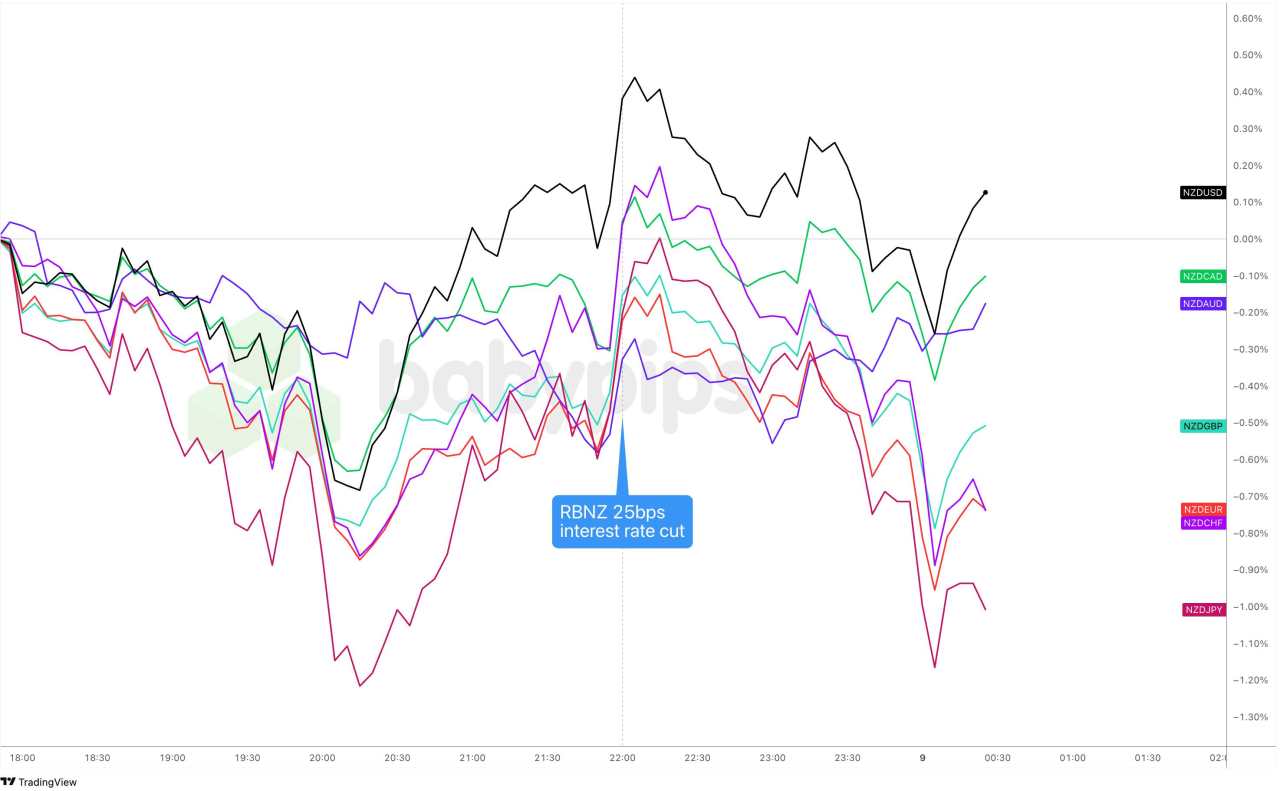The Reserve Bank of New Zealand (RBNZ) cut its Official Cash Rate (OCR) by 25 basis points to 3.50%, marking its fifth consecutive rate reduction since beginning the easing cycle in August 2024.
This decision followed three large 50bp cuts earlier in the cycle, including the substantial February 2025 reduction that brought rates to 3.75%.
The central bank’s Monetary Policy Committee, now chaired by interim Governor Christian Hawkesby following Adrian Orr’s surprise resignation in March, cited several factors behind their decision:
- Inflation remains near the midpoint of the 1-3% target band at 2.2%
- The economy is slowly recovering from recession with significant spare capacity
- Global trade tensions are creating downside risks, particularly Trump’s tariffs
- New Zealand’s vulnerability to global economic developments as an export-driven economy
Notably, the RBNZ left the door wide open for further monetary easing, stating: “As the extent and effect of tariff policies become clearer, the Committee has scope to lower the OCR further as appropriate.”
Link to RBNZ’s April 2025 policy statement
Investors are now pricing in roughly a 90% chance of another quarter-point cut in May, with expectations for rates to potentially reach 3.00% or lower by year-end.
The RBNZ’s pivot to focusing on global risks, particularly Trump’s tariffs including the 104% tariff on Chinese imports, signals a shift in priorities from the earlier phase of the easing cycle which was more domestically focused. With U.S.-China tensions escalating and JPMorgan now predicting a 60% probability of recession in the U.S. economy this year, the external environment will likely continue to influence RBNZ policy through 2025.
New Zealand dollar vs. Major Currencies: 5-min

Overlay of NZD vs. Major Currencies Chart by TradingView
The New Zealand dollar, which had been recovering from its U.S. session and early Asian session losses, initially popped higher when the RBNZ delivered the expected 25bps rate cut.
But the tides quickly turned as the central bank’s focus on U.S. tariff risks and its openness to more easing came off more dovish than expected. A May cut was already on everyone’s radar, but now markets are thinking the RBNZ might go full throttle with more rate cuts after that.
Kiwi sold off across the board, taking the biggest hits against safe havens like the yen and Swiss franc, as well as European currencies like the euro and pound. Losses were more limited against the softer U.S. dollar and other commodity currencies.


加载失败()